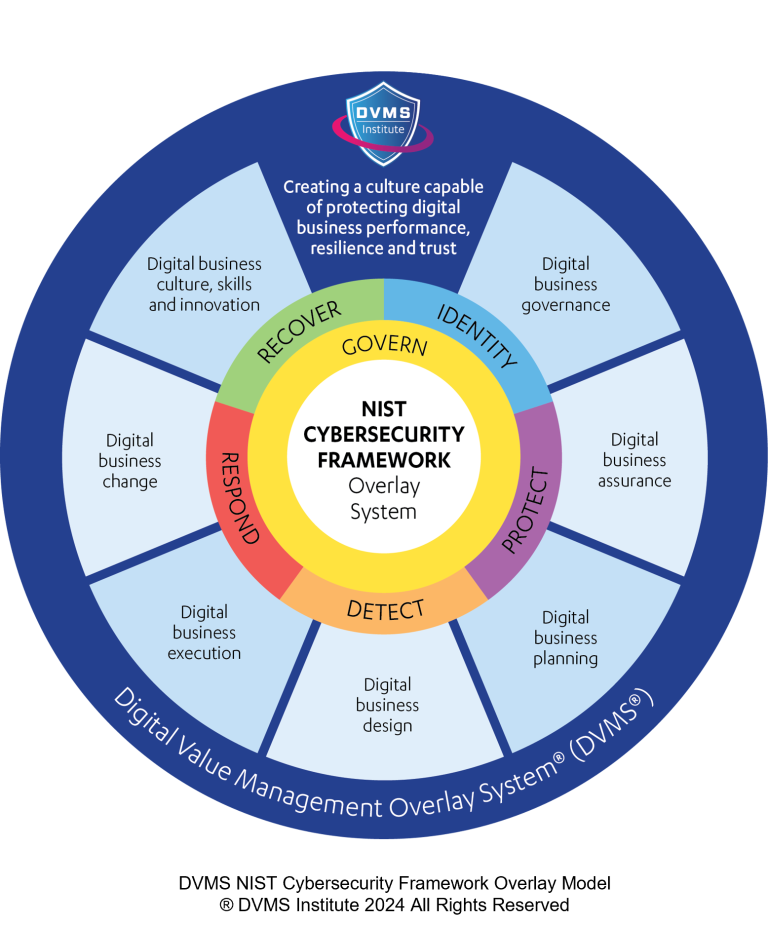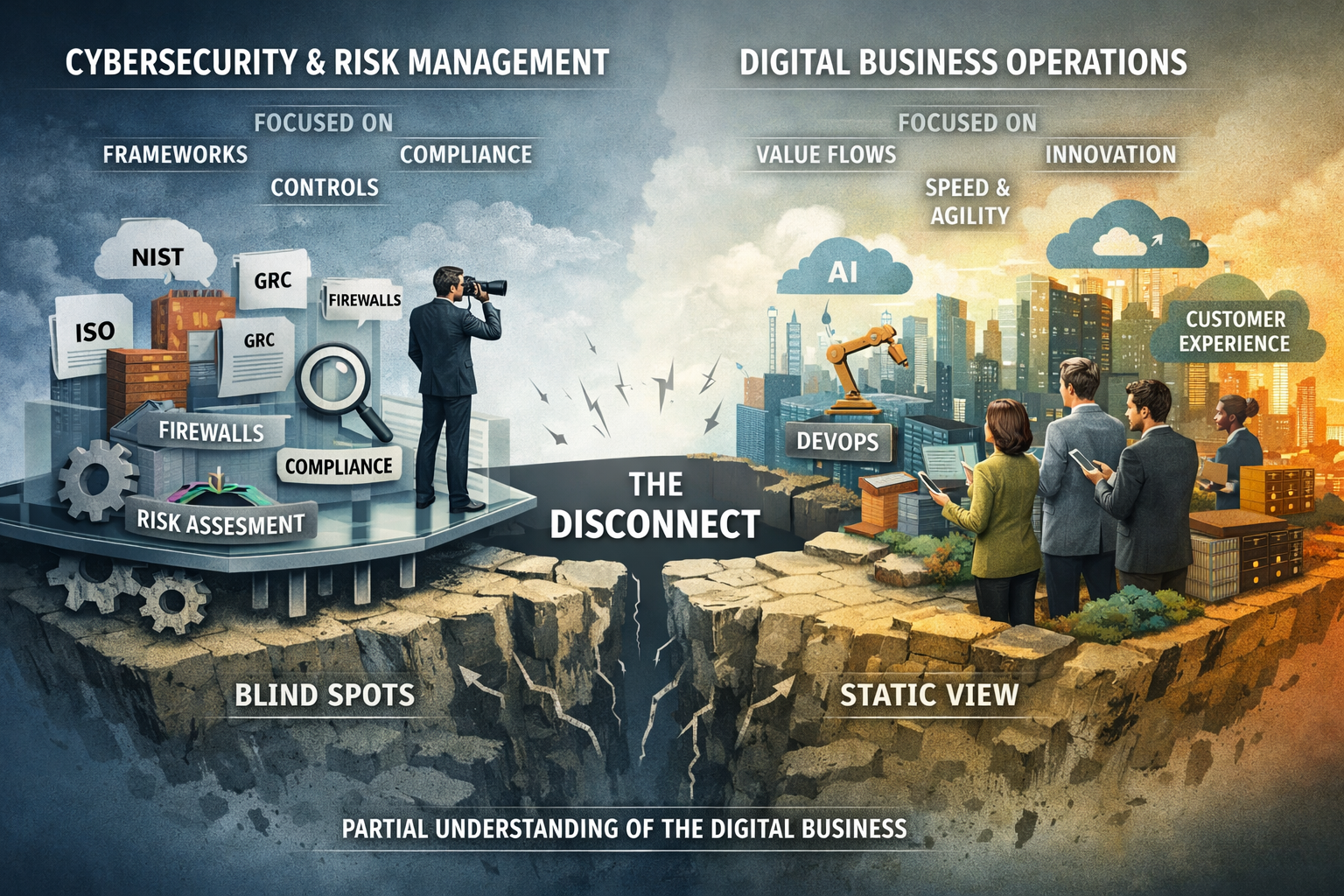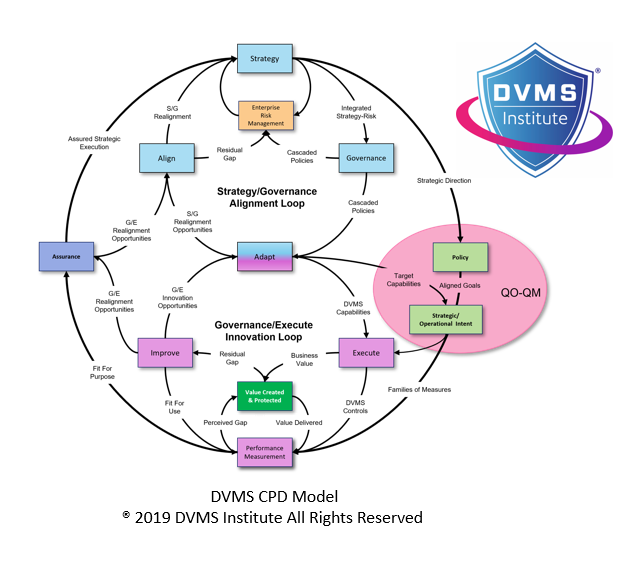ITIL and the NIST Cybersecurity Framework: A Synergistic Approach to Cyber Resilience
Rick Lemieux – Co-Founder and Chief Product Officer of the DVMS Institute
ITIL, a comprehensive IT Service Management (ITSM) framework, provides a structured approach to aligning IT services with the business’s needs. It emphasizes service continuity, efficiency, and improvement. The NIST Cybersecurity Framework (NIST-CSF) is a voluntary framework that helps organizations manage and reduce cybersecurity risks. It offers a flexible and customizable approach to mitigating cyber risk by identifying, assessing, and managing cybersecurity risks across an organization and its supply chain. When integrated, these frameworks create a robust foundation for achieving cyber resilience.
ITIL’s service lifecycle approach, encompassing service strategy, design, transition, operation, and continual improvement, aligns well with the NIST-CSF core functions of Governing, identifying, Protecting, Detecting, Responding, and Recovering. ITIL’s focus on service continuity and availability is inherently linked to the NIST Framework’s goal of ensuring the confidentiality, integrity, and availability of systems and information.
Organizations can identify and address cybersecurity risks throughout the service lifecycle by mapping ITIL processes to NIST Framework functions. For instance, during the ITIL Service Design phase, security controls can be integrated into service designs based on risk assessments conducted in line with the NIST Framework. Moreover, ITIL’s Change Management process can be aligned with the NIST Framework’s Protect function to ensure that changes to IT systems do not introduce new vulnerabilities.
ITIL’s Incident Management and Problem Management processes complement the NIST Framework’s Detect and Respond functions. By effectively detecting and responding to security incidents, organizations can minimize the impact of cyberattacks and prevent their recurrence. ITIL’s Continual Service Improvement process can be leveraged to enhance the organizational cybersecurity posture through regular risk assessments and new security controls, aligning with the NIST Framework’s Improve function.
Furthermore, ITIL’s focus on service relationships and customer satisfaction aligns with the NIST Framework’s goal of protecting critical infrastructure and assets. By building strong relationships with customers and understanding their security requirements, organizations can better protect sensitive information. ITIL’s Knowledge Management process can be used to capture and share cybersecurity knowledge, contributing to the organizational overall cyber resilience.
Integrating ITIL and the NIST Cybersecurity Framework offers a holistic approach to managing cybersecurity risk. By combining ITIL’s process-oriented framework with NIST’s risk-based approach, organizations can establish a strong foundation for cyber resilience. This approach enables organizations to deliver IT services efficiently and effectively while mitigating cybersecurity threats, protecting critical assets, and ensuring business continuity.
About the Author

Rick Lemieux
Co-Founder and Chief Product Officer of the DVMS Institute
The DVMS Institute teaches organizations of any size, scale, or complexity an affordable approach to mitigating cyber risk to protect digital business performance, resilience, and trust.
Rick has 40+ years of passion and experience creating solutions to give organizations a competitive edge in their service markets. In 2015, Rick was identified as one of the top five IT Entrepreneurs in the State of Rhode Island by the TECH 10 awards for developing innovative training and mentoring solutions for boards, senior executives, and operational stakeholders.
® DVMS Institute 2024 All Rights Reserved




